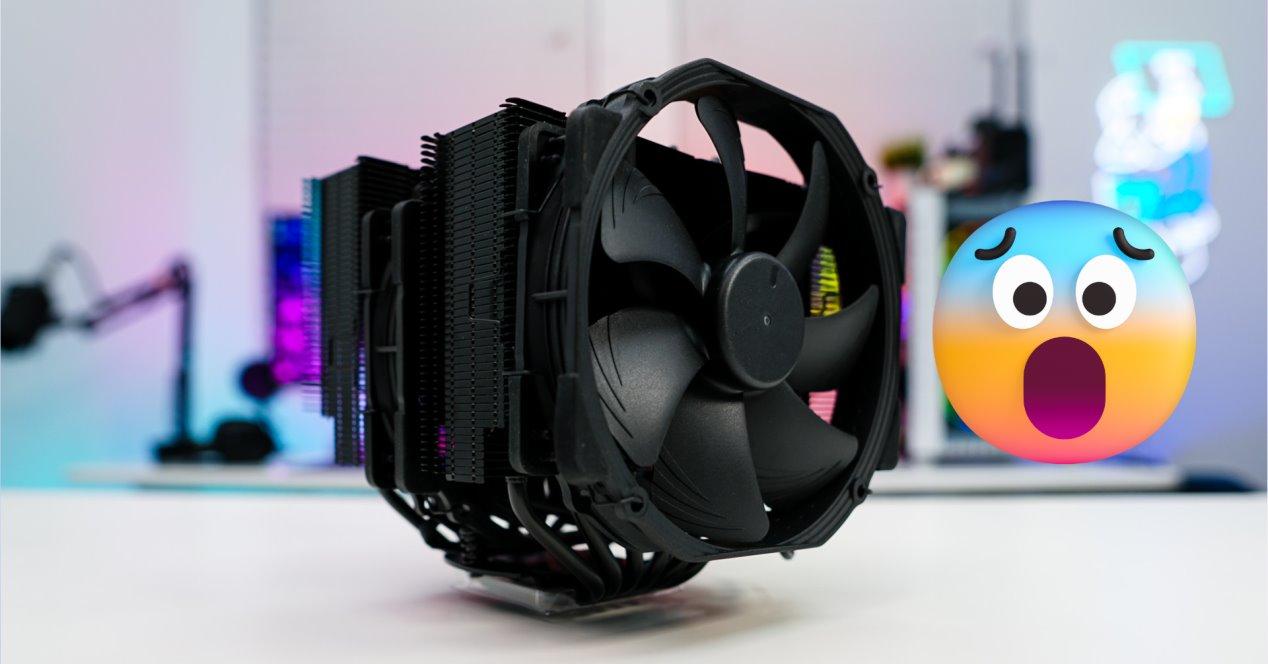Tower-style heatsinks with fans are more than adequate for the vast majority of cases. The problem usually lies in the choice of the same, because it is usually not clear how to choose. As simple as doing a very basic mathematical operation that will surprise you.
Forget the TDP processor, use the math
He TDP or Thermal Design Poweris a value in “watts” that indicates the maximum heat generated for him processor. In fact, setting it like this is not entirely correct, since this setting tells us the PDT maximum when the the processor is at 100%. Getting to use a processor to the maximum is very rare in everyday tasks, so it’s still indicative.
If we don’t want to complicate our lives, there is a very easy way to choose a heatsink for the processor. We don’t need to know the TDP for this, the only thing we need to know is the number of heat pipes
All commercial processors from Intel and AMD are subdivided into ranges. Intel name them Core i3, Core i5, Core i7 and Core i9. while aMARYLAND Name these ranges like Ryzen 3, Ryzen 5, Ryzen 7 and Ryzen 9. It is precisely the number of each of these processor ranges that matters to us.
We have to catch the processor range number and subtract 1. The result tells us how many heat pipes our CPU heatsink should have, at a minimum. If we choose the Intel Core i5 12500K, what interests us is the number 5 of the “i5”. we make a simple subtraction: 5 – 1 = 4. Ok we need one radiator with 4 heat pipes.
Moreover, this simple mathematical operation tells us that no processor is incompatible with an air cooler. If we have an AMD Ryzen 9, we will need a heatsink with 8 heat pipes. For this processor we could buy the Noctua NH-U12S chromax.black heatsink
Note: Consider that the heatpies on each side are independent, even if they are joined at the base
But what if we use the CPU intensively?
This very simple calculation is focused on creating equipment for games. Normally in the Games the component most use is graphics card, being the one who “suffers” the most. Usually the processor in these cases moves between 40 and 60% load from the total. This may vary depending on resolution, if you are simulcasting and other aspects.
We may need an advanced cooling system, such as liquid cooling. Always before making a purchase decision, we must be very clear about the use of the equipment. It does not consume the same amount of CPU to play in 1080p resolution as in 4K.
Moreover, the photo and/or video editing software they tend to rely heavily on the processor. THE CAD tools, For example, they use most of the CPU. Of course, the higher the CPU usage, the more heat it will generate.
We can, for this type of case, use a mathematical formula to know how many heat pipes we will need. Now that would be a sum, 1 must be added to the number of the processor range.
conclusion
Let’s forget the TDP for once, it’s not a very useful parameter except in very specific cases. For most users, this shouldn’t matter. It also doesn’t tell us how much heat a CPU will generate in average usage, let alone how much the CPU is consuming.
In the end, choosing a heatsink for our processor comes down to performing a subtraction or addition, depending on the use. When we acquire it for mainly gaming, subtracting 1 from the number of processor ranges is enough. If we are going to use it for streaming, professional editing and cases where the processor is “stressed” intensely, we add 1 to the processor line number and that’s it.
If now you warm your head, it’s because you want












